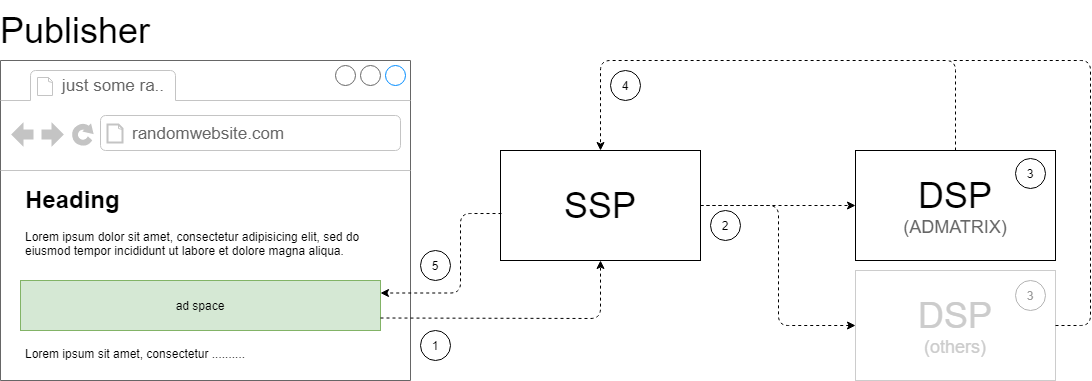Programmatic Advertising and ADMATRIX
This article is a short introduction of how ads are delivered in our browsing activities and its effects to the internet.
Advertising
Advertising plays a vital role in making things accessible. Let’s take a look at free air TV, in between shows there are commercial breaks. Companies pay for air time for their product during these breaks, which then allows us to enjoy the show without having to pay a cent. Programmatic Advertising works similarly, companies pay for an advertising spot that allows us to enjoy things freely. Facebook, Instagram, YouTube, Google search engine, and many others are free services because of ads. The programmatic part of it makes this kind of ad delivery more efficient.
Traditional advertising
Traditional advertising can be considered as brute force delivery although not totally since we can consider the time of the day in which a certain demographic watches TV, still this not an efficient way delivering these ads. A teenager watching during prime time might not be interested in buying vitamins. With programmatic advertising, the ads can be specifically targeted to a specific potential customer. Say for example you are looking at a certain item on an online store if you go to another website you might see ads reminding you that you took interest in certain items.
Programmatic Advertising
Programmatic Advertising is an automatic transaction between sellers and buyers of Ad space. There are a lot of things involved that make this automation work, but for simplicity, we will only focus on where ADMATRIX is closely involved. There are 3 major players here, the Publisher, Supply Side Platform or SSP, and Demand Side Platform or DSP. ADMATRIX is on the DSP side.

- When the publisher site is loaded it informs SSP that there is an available ad space.
- The SSP then send out a Bid Request to various DSP.
- DSP receives and processes the Bid Request and select an advertiser that best matches the request from SSP.
- SSP then processes the Bid Response from all the DSP and picks the highest bid.
- SSP then loads the winning DSP’s tag which contains the advertiser’s media.
In process number 1 we touch a little bit on what an SSP is about, so to add more information, an SSP is responsible in managing these ad spaces from and contacting DSP if any of these ad spaces are loaded. Examples of SSP are Google, AOL, OpenX.
If we take a look at process number 2 and 3, there are other DSP requested to participate in bidding for the Ad Space, which means we really need to be efficient in our Advertiser to Ad Space matching. To achieve this, ADMATRIX implements a lot of features ranging from publisher quality check, cookie sync which allows us to match user interest, and many others. Other than these automated processes, ADMATRIX also has an administrative side in which Operations manually configure client settings to effectively use their budget in the duration of their campaign. With that ADMATRIX is considerably a large project given the many features it needs to implement. The amount of data needed to be processed per minute from various sources requires a number of coding principles to be implemented in order for the project to be operational and maintainable.
Process number 5 is where you finally get to see ADMATRIX client’s Ad, but do note that showing the user(the person browsing) the ad is not the final stage. For every advertisement there is a goal, and that is to make you follow through the ad by clicking it and have you purchase, sign up or whatever is the client’s intent for their ad may be.
Summary
In summary, Programmatic Advertising is a more efficient way of delivering advertisement since it has the means to show them to specific customers. Furthermore it has also made internet more accessible by sponsoring services and the only thing we trade it with is we take a look at products we might be interested in.